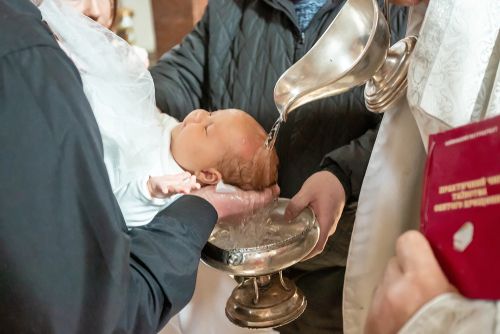 Interfaith unions are becoming more common, which means there's a higher chance that you'll get to preside over an interfaith baptism at some point in your journey as an ordained minister. An interfaith baptism will present you with a unique opportunity to unite people from diverse religious backgrounds in a shared celebration. Discover insights, tips, and advice on how to conduct an inclusive interfaith baptism while ensuring both parents feel supported and respected.
Interfaith unions are becoming more common, which means there's a higher chance that you'll get to preside over an interfaith baptism at some point in your journey as an ordained minister. An interfaith baptism will present you with a unique opportunity to unite people from diverse religious backgrounds in a shared celebration. Discover insights, tips, and advice on how to conduct an inclusive interfaith baptism while ensuring both parents feel supported and respected.
Getting To Know the Parents
Before planning the interfaith baptism, take some time to get to know the parents. Understanding their beliefs, values, and expectations is key to crafting a ceremony that reflects their wishes while incorporating elements from both faiths. You could schedule an informal meeting at a church or temple or even chat over a cup of coffee. Your genuine interest will go a long way in helping the couple navigate the complexities of an interfaith ceremony.
Exploring Neutral Venues
If possible, choose a neutral venue that doesn't favor one religion over the other. Check out some community centers in your neighborhood, look at parks, or suggest a family member's home.
Remember, the goal is to respect that two religious traditions are coming together for the interfaith baptism ceremony. Make sure to consult the parents to understand their preferences when choosing a location.
Crafting an Inclusive Ceremony
Creating a ceremony that respects both faiths while celebrating the child's entrance into their religious community can be a challenge. It may entail more complex planning and more leg work. Here are some tips to get you started:
Consult with religious leaders: Reach out to clergy or leaders from both faiths involved. They can provide guidance on appropriate rituals and symbols that can be incorporated into the ceremony.
Blend traditions: Integrate elements from both faiths into the ceremony. For example, you can include a water blessing from one faith and a candle lighting from the other.
Be mindful of language: Use language that emphasizes the universal themes of love, family, and community. For instance, instead of saying "baptize," you can use phrases like "welcoming into our faith community."
Involve family members: Encourage the grandparents or other family members to participate in the ceremony. This not only adds a personal touch but also highlights the unity of the extended family despite different faiths.
Invoke interfaith blessings: Invite blessings from clergy or leaders representing both faiths. This demonstrates unity and respect for both traditions. Don't forget to bless both parents as well.
Using Appropriate Readings and Prayers
When choosing readings and prayers, make sure they resonate with both faiths. It's always a good idea to select passages from religious texts or literature that convey universal messages of love, hope, and guidance. If you include prayers, customize them to reflect both religious traditions. You can have prayers from each faith or create a new prayer that encapsulates the shared values.
Always respect the parent's wishes. If they request specific readings or prayers, do your best to incorporate them into the ceremony where appropriate. When someone asks you to preside over a baptism, they are placing their trust in you. It may feel like a lot of responsibility, but it's also an opportunity to create a beautiful and long-lasting memory with people you care about.
Leading an interfaith baptism ceremony can be a beautiful and unifying time for everyone involved. Remember that your role as a minister is to create an inclusive, respectful, and memorable event that commemorates a child's official initiation into a religious community. Be flexible, empathetic, and open-minded, and your interfaith baptism ceremony will be a cherished experience for all.
Add Your Comment